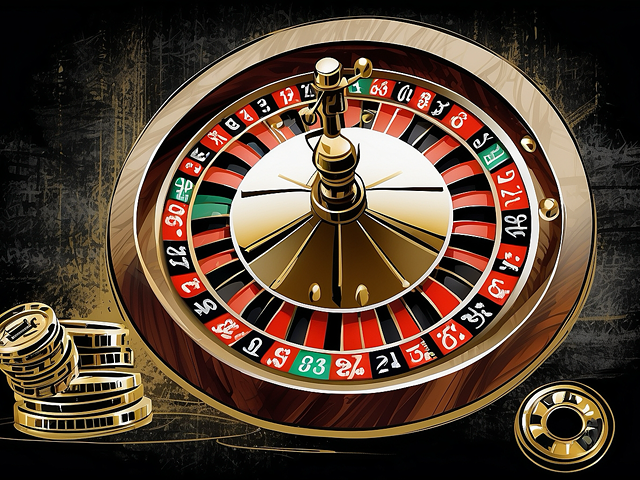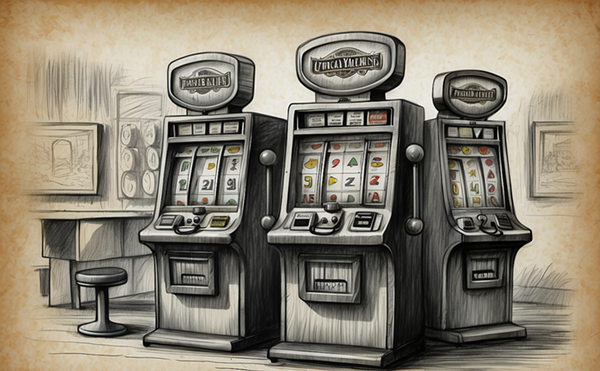Baccarat is a card game played at casinos, distinguished by its simple rules and quick gameplay. This section explains the fundamental aspects of playing Baccarat, such as the card values and the primary objective of the game.
Card Values and Scoring
Baccarat utilizes a standard deck of cards, and the value of each card is crucial for determining the score of a hand. The cards two through nine are taken at face value, meaning a two of any suit is worth two points, and so on. Face cards (jacks, queens, and kings) and tens are worth zero points. An ace counts as one point.
The scoring system in Baccarat is unique:
- When the values of the cards in a hand are added together, only the last digit is considered. For example, a hand consisting of a 7 and an 8 totals 15, but its Baccarat score is 5.
- If the total of the two cards is a double-digit number, the second digit is the value of the hand. For instance, a hand with a 9 and a 5 (totaling 14) is a 4 in Baccarat.
Here is a simple table for card values:
| Card | Value |
| 2-9 | Face Value |
| 10, Jack, Queen, King | 0 |
| Ace | 1 |
The Objective of Baccarat
The objective of Baccarat is to bet on the hand that will have a total value closest to nine. There are only three betting options:
- The Player hand
- The Banker hand
- A Tie (the hands having the same score)
The game begins with two cards being dealt to both the Player and the Banker. A third card may be dealt following specific rules. The hand with the total score closest to nine wins the round. If the score goes over nine, the first digit is dropped, and only the second digit is used as the score. Notably, the terms 'Player' and 'Banker' do not reference the participants but are merely the names of the hands in the game.
Rules of the Game
Baccarat is governed by straightforward rules that revolve around betting on which hand, the Player's or Banker's, will achieve a total closest to 9.
Player and Banker Hands
In baccarat, two hands are dealt: the Player hand and the Banker hand. Initially, both hands receive two cards. The goal is to have a hand total closer to 9, which is the best score. Unlike in other card games, the term "Player" does not refer exclusively to the person playing the game, and "Banker" does not refer to the house; they are simply the names of the two hands in the game.
Hand Totals:
- Number cards (2-9) count as face value.
- Aces count as 1.
- 10s, Jacks, Queens, and Kings count as 0.
If the total of the hand exceeds 9, the second digit is the value of the hand. For example, a 7 and an 8 total 15, but the hand value is 5.
Natural Wins and When to Draw a Third Card
A "natural" occurs when the initial two cards total 8 or 9 for either the Player or the Banker. If either hand has a natural, both hands stand and no additional cards are drawn. If neither hand totals 8 or 9, the drawing rules are consulted to determine if the Player hand should receive a third card.
Third Card Rules
The drawing of the third card for the Player's and Banker's hand is determined by specific rules:
- Player's Hand: The Player will draw a third card if their hand totals 5 or less. If the hand totals 6 or 7, the Player stands.
- Banker's Hand: The Banker's drawing rules are a bit more complex and depend on the Player's third card:
| Player's Third Card | Banker Draws if... | Banker Stands if... |
| 2 or 3 | Banker's total is 0-4 | Banker's total is 5-7 |
| 4 or 5 | Banker's total is 0-5 | Banker's total is 6-7 |
| 6 or 7 | Banker's total is 0-6 | Banker's total is 7 |
| 8 | Banker's total is 0-2 | Banker's total is 3-7 |
| Ace, 9, 10, or face card | Banker's total is 0-3 | Banker's total is 4-7 |
It’s important to note that if the Player does not draw a third card, the Banker will stand on a total of 6 or higher and draw one card on a total of 5 or less.
Betting in Baccarat
Understanding how to place bets in Baccarat is essential for players since it directly affects the game's outcome. Each type of bet carries a different house edge and payout, which are crucial for informed decision-making.
Types of Bets
In Baccarat, players have three betting options:
- Player Win: Betting that the player's hand will win.
- Banker Win: Wagering on the banker's hand to win, which traditionally has a slightly higher chance of winning.
- Tie: A bet placed on the outcome that the player and banker hands will have the same value.
Each option offers different odds and players must decide where to place their chips before the round begins.
House Edge Explained
The house edge is a pivotal factor in Baccarat, as it represents the advantage the casino holds:
- Banker Win bets have a house edge of approximately 1.06%.
- Player Win bets feature a slightly higher house edge at around 1.24%.
- Tie bets come with a significantly higher house edge, often nearing 14.36%.
The lower the house edge, the better the potential long-term returns for the player.
Understanding Payouts
Payouts in Baccarat reflect the winning probabilities of each bet type:
- Player Win bets pay 1:1, meaning if one bets $100, they will win $100.
- Banker Win bets also offer a 1:1 payout but are subject to a 5% commission, effectively making the payout 0.95:1.
- Tie bets typically offer a payout of 8:1 or sometimes 9:1, reflecting their lower probability of occurring.
Players should always consider both the payouts and the house edges when placing bets in Baccarat.
Gameplay Procedure
Baccarat's gameplay centers on the comparison of two hands: the Player's and the Banker's. The objective is to bet on the hand that comes closest to a total of nine points.
Dealing Cards at the Baccarat Table
At the start of a baccarat game, the dealer deals two cards each to the Player's and the Banker's hand from the shoe, which is the container holding the decks of cards. The cards are dealt face up. The Player's hand is dealt first. Should either hand total eight or nine from the initial two cards, this is deemed a 'natural' win, and that round ends there.
Additional Gameplay Rules
If neither hand scores a natural win, additional gameplay rules determine if the Player's hand should receive a third card. This decision is based on the total:
- Player's Hand Rules:
- If the total is 8 or 9, Player stands.
- If the total is 6 or 7, Player stands.
- If the total is 5 or less, Player receives a third card.
- Banker's Hand Rules:
- If the Player did not receive a third card, the Banker follows the same rules as the Player's hand rules, drawing with 5 or less and standing with 6 or 7.
- If the Player did receive a third card, the Banker's action is dependent on the Banker's initial total and what the Player's third card was.
Baccarat Strategies
In baccarat, strategic play centers on informed wagering and managing funds effectively. They can't control the game's outcome, as it relies on chance, but players can adopt strategies designed to maximize potential returns and minimize losses.
Common Baccarat Systems
Several betting systems are commonly used in baccarat. They can't guarantee wins, as luck is a significant factor, but they do provide structured approaches to wagering.
- The Fibonacci System: This strategy uses the Fibonacci sequence to determine bet sizes. After a loss, the player moves one step forward in the sequence for the next bet. After a win, they go back two numbers. However, it’s essential to understand that no progression system can overcome the house edge.
- Martingale System: A negative progression system where the bet is doubled after every loss. This is a risky strategy, as it assumes that a win will eventually recover all previous losses.
- Paroli System: A positive progression system that involves doubling the bet after every win, with the aim to capitalize on winning streaks.
- Flat Betting: The player wagers the same amount every hand, disregarding previous outcomes. This is the least risky strategy and aids in bankroll management.
Bankroll Management Tips
- Set Limits: Players should establish clear limits for winnings and losses. This prevents emotional betting and ensures that they leave the table before depleting their funds.
- Betting Proportions: Bets should be a small percentage of the player's total bankroll, commonly around 1-5%. This helps sustain the player longer through the natural ebb and flow of the game.
- Keep Track of Bets: They should record all their bets to monitor their performance over time and adjust their strategy as needed.
- Avoid Chasing Losses: Players should resist the temptation to increase bets after losses in an attempt to recover their funds. This often leads to larger losses.
Variations of Baccarat
Baccarat, with a few principal variants, offers diverse experiences in gameplay. Each variation alters certain rules and table layouts, appealing to different player preferences.
Punto Banco vs Baccarat Banque
Punto Banco, often referred to as North American Baccarat, is the version widely played in casinos worldwide, especially in the United States, Canada, and Australia. It is played using six to eight decks of cards with players competing against the house. In Punto Banco, the casino banks the game at all times, and the players bet on either the 'Player' or the 'Banker' hand.
Baccarat Banque differs as it uses fewer decks, typically three. Here, one player assumes the role of the banker for the duration of the game and competes against two player hands simultaneously. The banker position is much more permanent compared to other versions, adding a strategic layer to the role.
Chemin de Fer, Mini Baccarat, and Midi Baccarat
Chemin de Fer is a European variant of Baccarat where the role of banker rotates among the players. Notably, players can choose to take a third card or stand, offering them a degree of control that doesn't exist in Punto Banco.
Mini Baccarat is a scaled-down version of Punto Banco, played on a smaller table with lower stakes. The game maintains the same basic rules but is faster-paced and more accessible, making it appealing for casual play.
Midi Baccarat strikes a balance between the grand scale of traditional Baccarat and the expedience of Mini Baccarat. Tables for Midi Baccarat are larger than Mini Baccarat but smaller than those used in the full version, making it suitable for players looking for medium-stakes gaming with a moderately paced game.
Playing Baccarat Online
When venturing into online Baccarat, players must consider the choice of casino and the formats available, such as live dealer options and mobile accessibility.
Choosing an Online Casino
Selecting a reputable online casino is crucial for a secure gaming experience. Players should look for casinos with:
- A valid license to operate.
- Positive reviews from other players.
- A variety of Baccarat games.
- Secure payment methods for real money play.
It is advisable to verify the casino's customer support services and check for any bonuses that may benefit Baccarat players.
Live Dealer Baccarat and Mobile Gaming
Live Dealer Baccarat brings the authentic casino experience to players' screens, featuring real-time gameplay with human dealers. Players should ensure their internet connection is stable to avoid interruptions. Most online casinos now offer Live Dealer Baccarat which can be accessed on both desktop and mobile devices.
Mobile Baccarat allows players to engage with the game from their smartphones or tablets, ensuring they can play anytime and anywhere. Casinos may have mobile-optimized websites or apps available for download. When playing Baccarat for real money on mobile devices, security and ease of navigation are key factors to consider.
Baccarat Side Bets and Additional Wagers
In Baccarat, aside from the main betting options on the Player, Banker, or a Tie, casinos offer various side bets that can make the game more compelling. These wagers typically offer higher payouts but also come with greater house edges, reflecting their increased risk.
Player Pair and Banker Pair
Player Pair and Banker Pair are two popular side bets in Baccarat. They win if the first two cards dealt to the respective hand, Player or Banker, are a pair.
- Player Pair: Wins if the first two cards on the Player hand are a pair.
- Payout: Typically 11:1.
- House Edge: Generally around 11%.
- Banker Pair: Wins if the first two cards on the Banker hand are a pair.
- Payout: Typically 11:1.
- House Edge: Generally comparable to Player Pair.
Other Side Bets
Apart from pair bets, casinos offer a variety of additional wagers:
- 3-Card Six: This bet wins if both Player and Banker hands get a 3-card six.
- Payout: 100:1 if both get a 3-card six; 8:1 if either hand does.
- House Edge: Around 13.37%.
- Bellagio Match: This is for getting three of a kind in a multiplayer game.
- Payout: 75:1 for Player three-of-a-kind; 68:1 for Banker.
- House Edge: 5.27% for Player; 8.57% for Banker.
- Super 6: Only available in some casinos, pays out if Banker wins with a six.
- Payout: Varies by casino, often 12:1.
- House Edge: Can be around 29% at some casinos.
It's worth noting that the house edge on side bets is generally higher than for the main game's Player and Banker bets. While the possibility of larger wins exists, players should be aware of the increased risk associated with these additional wagers.
Historical and Cultural Context of Baccarat
Baccarat's history reflects its transformation from an aristocratic pastime to a popular casino staple. This section explores the game's genesis and its contemporary standing within casino culture.
Origins and Popularity
Baccarat began in Italy during the 15th century under the name "baccara," which in Italian signifies "zero," indicating the point value for face cards and tens. Its creation is often attributed to gambling aficionado Felix Falguerein. The game quickly found favor among the French nobility, where it evolved into two main variants: Chemin de Fer and Baccarat Banque. With France's historical influence on culture and luxury, Baccarat secured a reputation for sophistication and exclusivity.
In the 19th century, Baccarat soared in popularity also due to the French influence and became a favorite among the aristocrats and elite, further entrenching the game in European gambling tradition.
Baccarat in Modern Casino Culture
Transitioning to the new world, Las Vegas casinos introduced Baccarat in the late 1950s, notably the Punto Banco version. It premiered at the Las Vegas Sands casino on November 20, 1959, marking a new era for table games within casino culture. This debut was glamorous yet turbulent, with the casino initially losing a substantial sum.
As Baccarat spread through casinos worldwide, its accessibility and status evolved. Unlike table games like blackjack, which uses a strategy known as card counting, Baccarat is predominantly luck-based, widening its appeal. Its simplicity and sophistication continue to attract a diverse crowd, from casual players to high rollers.
Today, Baccarat stands as a pillar among casino card games, due in part to its portrayal in popular culture, including in the James Bond series. It is there, in this blend of French elegance and Vegas glamour, that Baccarat thrives—an indelible part of the casino experience.
Developing Your Baccarat Skills
Sharpening one's abilities in Baccarat hinges on understanding its gameplay and knowing when to implement advanced strategies. Familiarity with the rules and consistent practice are foundational for any player aiming to excel in this game.
Practicing Gameplay and Bets
To develop one's Baccarat skills, they should start by internalizing the game's basic rules and structure. A player can practice placing bets on Player, Banker, or Tie spaces, knowing that both Player and Banker bets offer even money (1:1) payout, minus a commission on the Banker bets. It's worth mentioning that the house edge is roughly 1.36% on Player bets and 1.06% on Banker bets after the commission. One can engage in regular gameplay, either through free online platforms or with friends, to refine this fundamental knowledge.
Pro tip: Tracking results and outcomes of previous hands can be a useful way to understand trends, although players should remember that each hand in Baccarat is an independent event.
Advanced Tips and Techniques
Once they've mastered the basics, a player can advance their Baccarat skills by studying different baccarat strategies and understanding when they may apply. For example, the Martingale System is a common strategy where the player doubles their bet after each loss, with the concept of recouping all previous losses with a single win.
| Strategy | Description |
| Martingale | Double bet size after losses. |
| Fibonacci | Bet progresses through the Fibonacci sequence after losses. |
| Paroli | Double bet size following a win with a view toward three consecutive wins. |
Frequently Asked Questions
In this section, the reader will find concise answers to common queries about playing the game of Baccarat, which will help both novices and seasoned players understand the essentials of the game.
What are the steps to get started with playing Baccarat?
To start playing Baccarat, one must first understand the game's objective, which is to bet on the hand that will total closest to nine. A player places a wager on either the Player, Banker, or a Tie. Cards are then dealt according to fixed rules and the outcomes are announced.
Can you explain the scoring system in Baccarat?
The scoring in Baccarat is unique; cards two through nine are worth their face value in points, tens, jacks, queens, and kings have no point value (are worth zero), and aces are worth one point. If the total of the hand exceeds nine, the score is adjusted by subtracting ten from the total.
What are the best strategies for winning at Baccarat?
Since Baccarat is a game of chance, the best strategy focuses on managing bets and money. Betting on the Banker's hand has slightly better odds than the Player’s hand. Avoiding the Tie bet, which has lower odds of winning, is often recommended.
What are the differences between Baccarat and Mini-Baccarat?
Baccarat and Mini-Baccarat share the same fundamental rules. The primary differences lie in the size of the table, the number of players that can participate, the involvement of players in dealing the cards, and the stakes involved. Mini-Baccarat tends to have lower betting limits and a faster pace.
How does betting work in Baccarat games?
Betting in Baccarat occurs before the hand is played. Players choose to place their bets on either the Player's hand, the Banker's hand, or a Tie. The dealer then proceeds with dealing cards, and the result of the hand determines the winning bets.
What should beginners know before playing their first game of Baccarat?
Beginners should know the basic rules of Baccarat, including how cards are dealt and scored. They should start by betting on the Banker's hand due to its slightly better odds and should familiarize themselves with the table's layout and betting options before playing.
For more information please contact us: [email protected]






